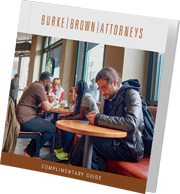
PROTECTION ORDER PROCEEDINGS SEEM DECEPTIVELY SIMPLE.
The petitioner can go to court, make statements without any additional proof and get a temporary order. It’s that easy. A respondent can reply similarly. But without proof, it becomes a swearing contest – which is risky. It’s easy to lose that contest. Courts respond to proof.
THE DANGER OF ASSUMPTIONS
Lies that are obvious to a respondent, aren’t always obvious to a judge. They just aren’t. A judge may accept someone may be minimizing, distorting or outright lying. But they won’t necessarily take the respondent’s word for it. This is when a respondent may think that showing disbelief and outrage might be more persuasive. But this can cut against a respondent. Anger or loss of control may be part of the accusation. Audible sighs, angry tones, interrupting and eye rolling can be fatal to a case. Showing intensity of emotion in court might actually be proof of the petitioner’s claim. Proof is the focus in court. Evidence that deals with the petitioner’s accusations head on is the best way to persuade a judge. Witness statements, text messages, cell phone records and photographs, to name a few, are things that might help. Absence of proof is important to the court too. What evidence is missing that one would expect if the accusation was true? Missing evidence can be just as strong as actual evidence. Arguing that there is no proof is an accepted defense in a criminal case. But a protection order case can involve more to win. In our experience, a good case involves having all the expected evidence on our client’s side and the opposing side is missing evidence a judge would expect.
UNDERSTANDING THE WEIGHT OF EVIDENCE
Some types of proof are more persuasive than others. The court will decide what “weight” to give evidence. For example, a mom giving a statement that supports her son/daughter might not be given much weight by a judge. Moms generally support their children – bias is assumed. If this is the only evidence to support a claim, it might not be enough. If mom’s statement is all there is, we look at how to bolster the weigh of it. There is no magic number to the amount of evidence needed to win, the more the better. The judge might not give much “weight” to certain evidence standing alone. Additional evidence can give weight to evidence that would otherwise not be persuasive to the judge. Supporting evidence with other evidence is stronger. Consider the idiom – don’t put all your eggs in one basket.
MAKING SURE EVIDENCE ACTUALLY HELPS
A word of caution – some evidence that a party thinks is strong might actually help the other side. What if a judge sees it differently? All evidence must be carefully evaluated. Understand how it might be spun against your position. Playing devil’s advocate is important. We know our client’s evidence may also be their evidence. We weigh those risks in advance.
PUT IT ALL TOGETHER
Be aware that proof alone might not be enough. Tying proof together through argument is important. Judges are smart but they might view the evidence differently than a party or they just might not get what a party is getting at. Telling the judge what weight to give the evidence and what the evidence shows is the recipe for the greatest success in court.
ANTICIPATING TIME CONSTRAINTS
Anticipate time constraints. Judges often don’t allow the parties to control how much court time they get for their case. Putting proof and argument together in court needs to be done efficiently. The court runs a calendar of many cases set for the same time. They want to hear all of the cases on the calendar. For example, King County Superior Court has especially full domestic violence protection order calendars. Commissioners might become impatient and cut a party off. That’s not good. Worse, the respondent may not get equal time as the petitioner. Prepare to be time efficient. A party/attorney needs to avoid assumptions of an easy victory (or loss). Be prepared with evidence and argument and be prepared to be efficient in the presentation. This gives the best chance of success. I am an attorney, but I’m not your attorney and this post does not create an attorney-client relationship. This article is legal information and should not be seen as legal advice. Every case and case strategy is different. You should consult with an attorney before you rely on this information.
Burke Brown Attorneys
Latest posts by Burke Brown Attorneys (see all)
- What Options Do You Have When CPS is Weaponized Against You? - April 3, 2024


